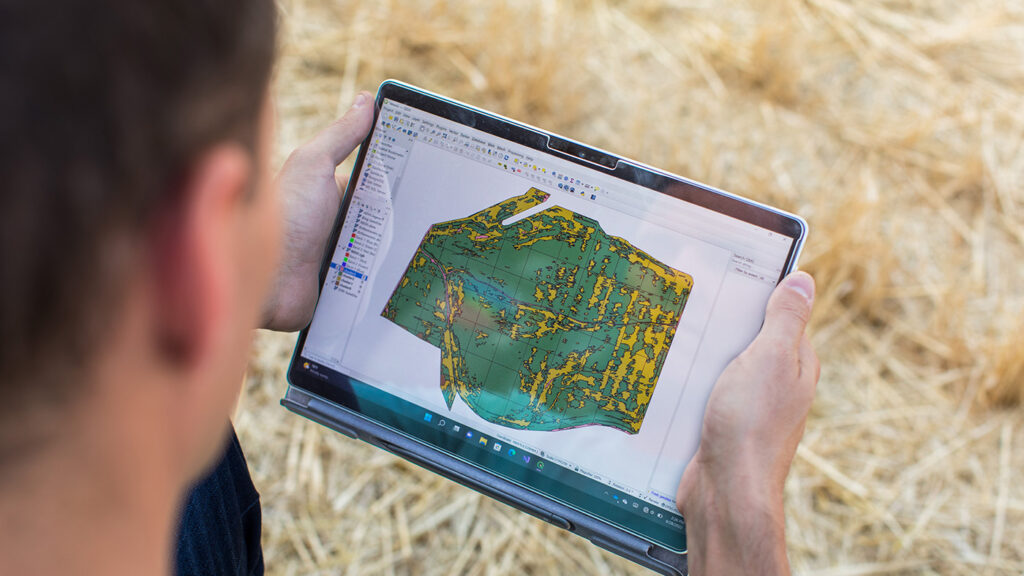Extracting intelligence from farm data and remote sensing sources

No single data source gives us the complete information about a farm. Sensors capture temporal data for a location, satellites or drones give spatial information at an instant in time, and neither have enough information extract details about properties below the soil’s surface.
Our key hypothesis is that merging a variety of data sources can help us create the ultimate truth about a farm. Through FarmVibes.AI, we have done this for a variety of data sources, including:
- Heat maps — by combining Sensor + Aerial Imagery, e.g., soil moisture, soil temperature, carbon, weed, nutrients, and soil pH heat maps (accepted to
Read the paper presented at IEEE Micro 2022 > - Seeing through clouds — by combining Optical + RADAR imagery to see through Clouds, with a technique called SpaceEye
Read the paper > - Super-res satellite imagery — by combining low res, cloud-free satellite imagery (from SpaceEye) with higher res cloudy satellite imagery
- Microclimate prediction — by combining on-farm sensor data with weather predictions from weather services
Read the paper presented at KDD 2021 >

In addition to research, we are making these tools available to the broader community. Scientists, researchers, and partners can build new workflows leveraging these AI models, to estimate farming practices, the amount of emissions, and the carbon sequestered in soil.
As an agri/food or sustech data scientist or researcher interacting, fusing, deriving insights from various such spatial-temporal datasets is hard. With FarmVibes.AI, one can develop rich insights for agriculture with ease. They can build models that fuse multiple geospatial and spatiotemporal data from the field to obtain insights regarding its carbon footprint (as determined by tilling, fertilization, and cover crops), the nutrition of food that it is growing (e.g., yield and protein content), and the long-term sustainability of the soil and the water (e.g., detect if topsoil erosion is being arrested and water ways are designed to retain rain and flood water). These insights are not otherwise possible (with regard to robustness, precision and/or accuracy) without the fusion techniques in FarmVibes.AI. You can fuse together satellite imagery (RGB, SAR, multispectral, different resolutions), drone imagery (RGB, multispec, hyperspec), weather data (historic, current, and forecasts), sensor timeseries data (soil as well as atmospheric), and more (e.g., information from industrial vehicles such as tractors).

